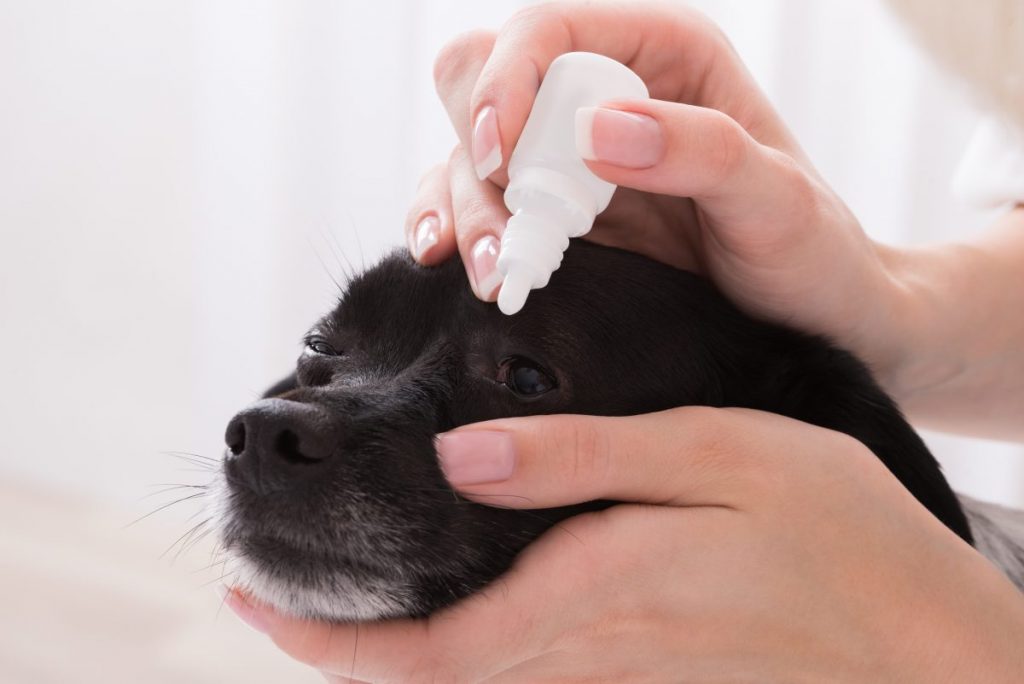Have you ever looked into the lens of your furry, four-legged friend and noticed something like a blanket of fog has permanently settled in?
Cataracts. A cloudiness that befalls our beloved four-legged friends as the years pass by and old age sets in. Although cataracts are a common problem affecting dogs’ vision, there is still so much left to discover about canine cataracts.
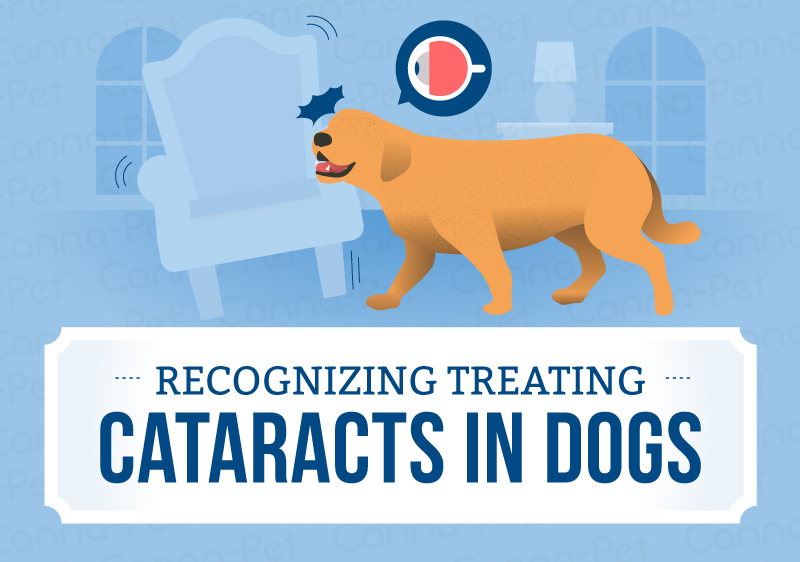
What are Cataracts?
A cataract refers to cloudiness in the lens of the eye leading to blurred vision, which ranges from partial to complete opacity. When the lens becomes cloudy it can prevent light from passing to the retina, contributing to vision loss.
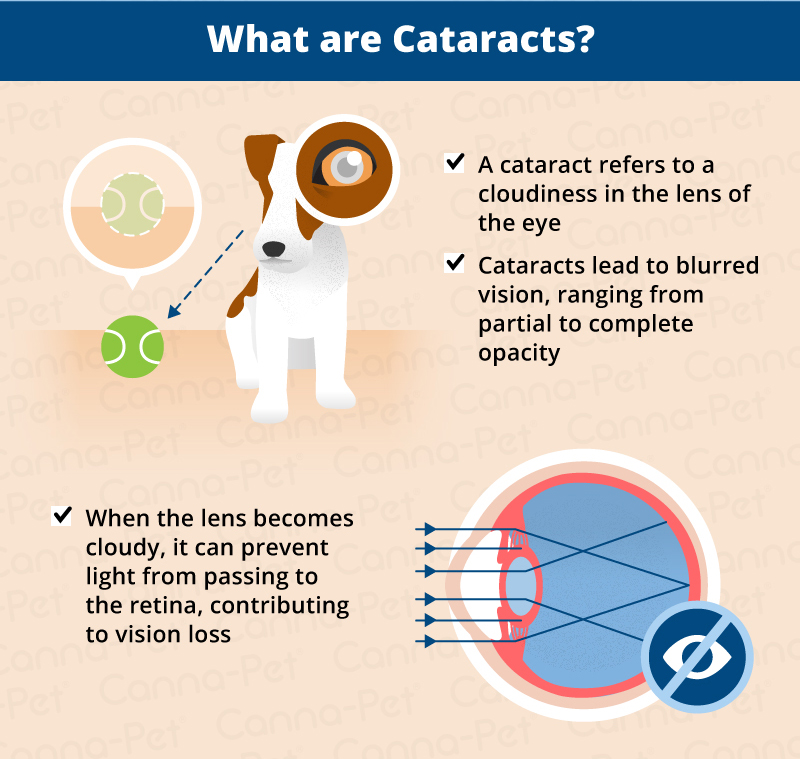
What Causes Cataracts in Dogs?
Cataract development is one of the most common problems affecting dogs’ eyes. Although any dog can be afflicted, old age is a huge factor, as well as breed. In fact, most cases are inherited. The following breeds are especially prone to hereditary causes:
- American Cocker Spaniel
- Boston Terrier
- Golden Retriever
- Miniature Poodle
- Miniature Schnauzer
- Siberian Husky
In addition, the following risk factors increase the likelihood of a dog developing cataracts:
- Old age
- Congenital cataracts, or being born with cataracts
- Secondary to other diseases of the eye like glaucoma
- Diabetes mellitus
- Electric shock
- Exposure to radiation or toxic substances
- Hypocalcemia, or very low calcium levels in the blood
- Inflammation in the eye
- Nutritional disorders
- Trauma, or eye injury
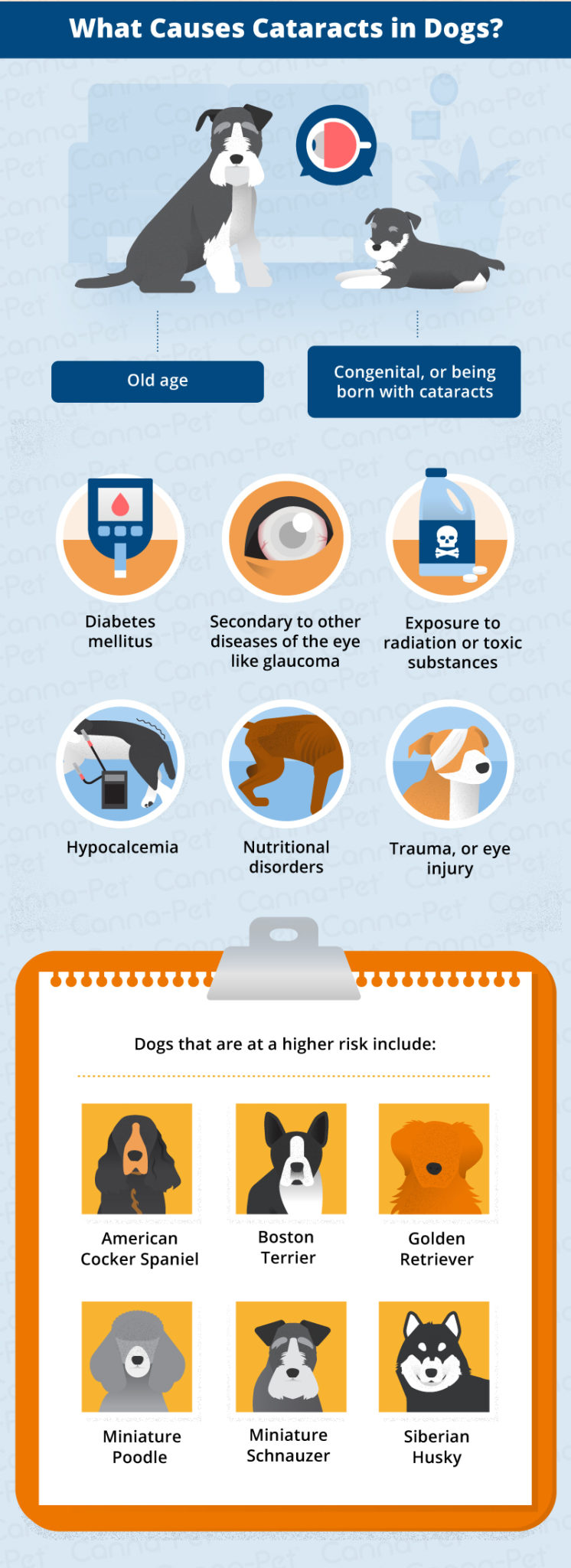
Signs of Cataracts in Dogs
How can you tell if your dog is affected by cataracts? The degree to which your dog is affected is most often connected with lens opacity—that is, cloudiness. Whereas dogs with a low level of opacity may not show any symptoms, dogs that experience more than 60 percent opacity of the lens capsule may show signs of vision loss or difficulty navigating dimly lit areas.
In addition, if your dog has cataracts from diabetes mellitus you may notice increased thirst, increased frequency of urination, and weight loss.
Symptoms of Cataracts in Dogs
Cataracts are often caught by the cloudy or bluish-gray coloring in the eye, though this can also be a sign of nuclear sclerosis. Nuclear sclerosis, the natural onset of graying with age, does not affect your dog’s ability to see. Still, any cloudiness garners reason enough to visit the veterinarian.

How to Treat Dogs with Cataracts
If you suspect your dog may be affected by the looming cloudiness of cataracts, take him to the vet right away. Cataract is a progressive disorder—it can worsen by the day, so treatment is of the utmost importance.
To this day, cataract surgery remains the most widespread option for treatment. As with humans, this surgery is very common and involves removing the cataractous lens to replace it with an artificial one.
Unlike humans, however, cataract surgery for dogs can be quite expensive as it requires a veterinary ophthalmologist. The surgery does pose risks such as infection, eye damage, glaucoma, retinal detachment, and complete blindness, but you must remember that it is quite commonplace.
If the surgery is successful, your dog will experience restored vision, though not as complete as before as age and scarring from the procedure ascertain that his vision will not be the same.
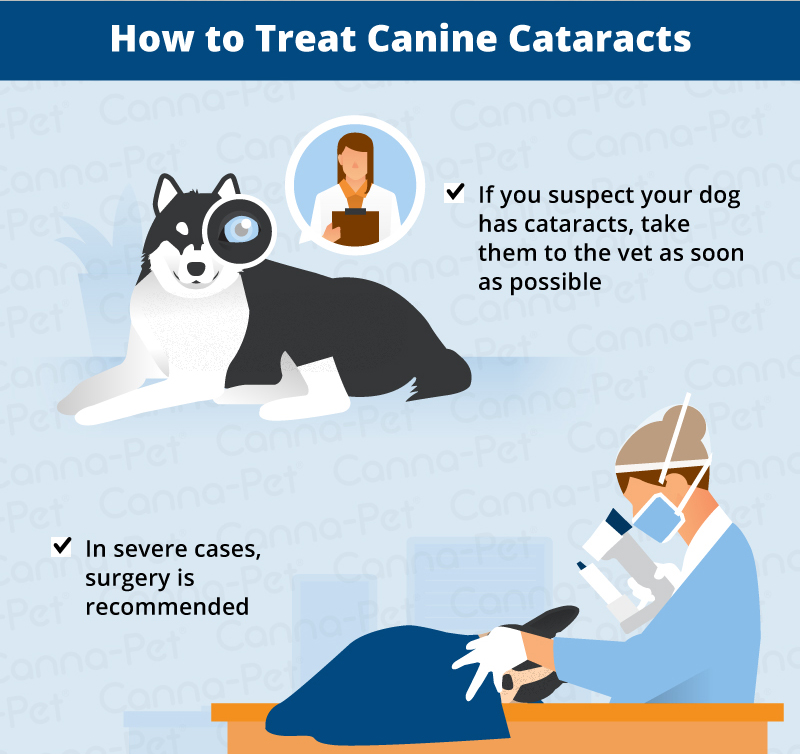
How to Prevent Cataracts in Dogs
Recent studies show that proper nutrition can lead to delay, and even prevention of cataract formation in your puppy pal. Certain natural antioxidants have even been found to reduce age-related cataracts in older dogs.
The following have been recommended for the prevention of canine cataracts:
- 50 IU of vitamin E for every ten pounds of weight, mixed in with your dog’s food once a day
- 100 mgs of vitamin C two times a day for every ten pounds of weight
- It is recommended to add the powdered version to his food
- Warning: Vitamin C can cause diarrhea
- Carrots, kale, plus other green and yellow vegetables
- 50 mgs of bilberries in supplement form daily. Bilberries carry an antioxidant property that protects eye tissue.
- Protective eye drops specifically made for dogs. These lubricating eye drops contain N-acetylcarnosine, a super-antioxidant which has been clinically proven to reverse and prevent cataracts.

Optimal vision for your pet can lead to an optimal life. Initiating these steps to prevention early on can help to ensure your dog enjoys a long, happy life filled with sights to behold!


